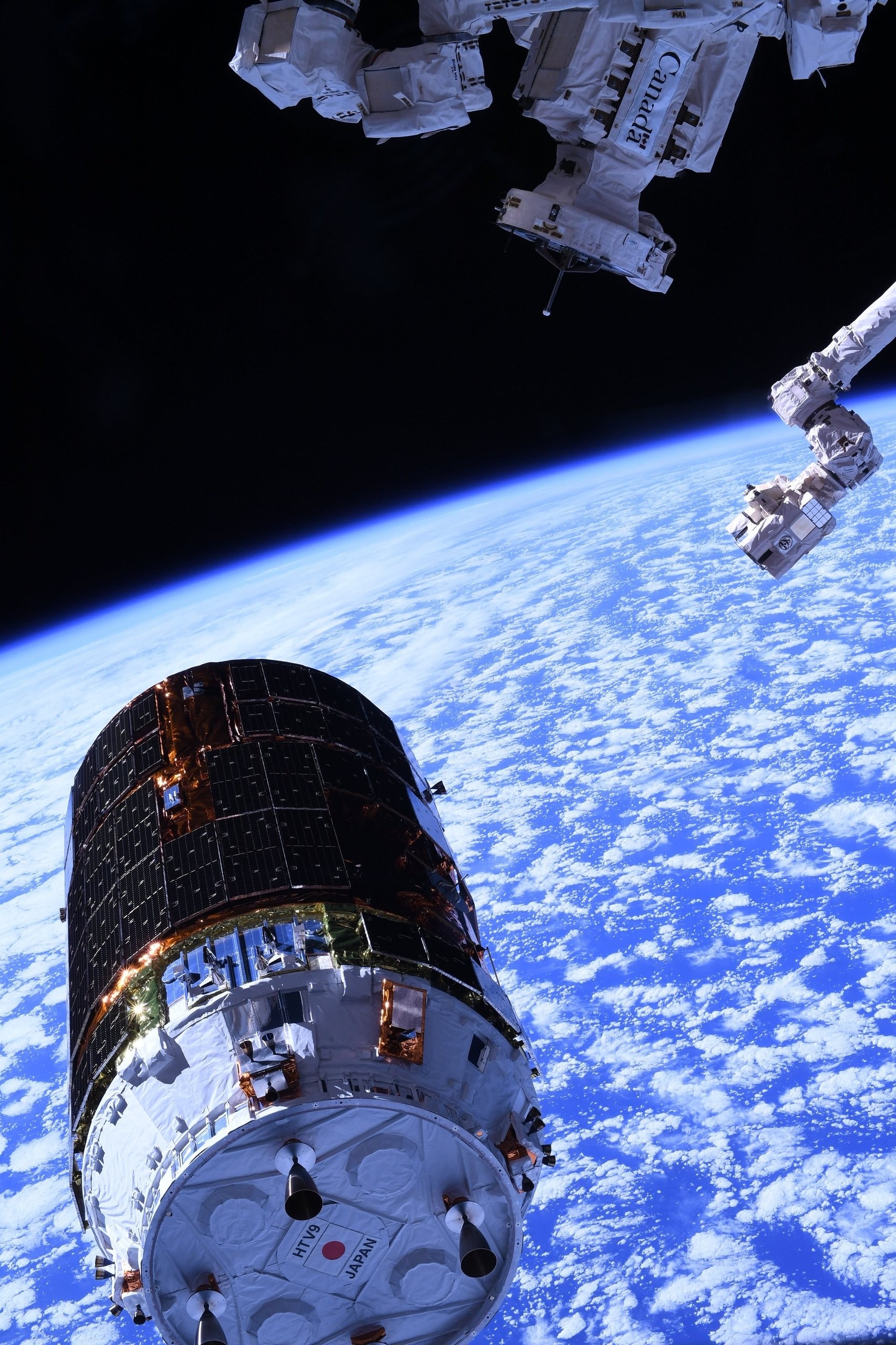[:ja]イワン・ワグナー宇宙飛行士がISSから撮影した日本の補給船こうのとり9号です。

「こうのとり」は、H-IIBロケットにより打ち上げられる無人の宇宙船で、食糧や衣類、各種実験装置など最大6トンの補給物資を地上約400km上空の軌道上にある国際宇宙ステーションに送り届け、補給が済むと用途を終えた実験機器や使用後の衣類などを積み込み、大気圏に再突入して燃やします。こうのとりは2009年の初打ち上げから失敗なく9回補給を続け、引退します。今後は輸送能力を強化した次世代機「HTV-X」が補給を担う予定で2022年の打ち上げ予定です。
参考文献: Ivan Wagner’s Tweet
地球俯瞰画像を見る: LiVEARTH
[Earthview Wonders] No.1036: Kounotori (HTV9)
Astronaut Ivan Wagner captured from ISS the Japanese HTV9 cargo spacecraft.

HTV is an unmanned cargo transporter developed by Japan that delivers various supplies to International Space Station (ISS). It re-enters the atmosphere at 120km altitude, melting starts at 80km mesosphere with aerodynamic heating and leftover pieces fall on the South Pacific Ocean. Since its first launch in 2009, HTV or Kounotori has successfully executed 9 resupply missions to the ISS. Following its retirement, the next-generation HTV-X series is expected to begin launching no earlier than 2022.
Reference: Ivan Wagner’s Tweet
See earthview photo gallery: LiVEARTH[:en][Earthview Wonders] No.1036: Kounotori (HTV9)
Astronaut Ivan Wagner captured from ISS the Japanese HTV9 cargo spacecraft.

HTV is an unmanned cargo transporter developed by Japan that delivers various supplies to International Space Station (ISS). It re-enters the atmosphere at 120km altitude, melting starts at 80km mesosphere with aerodynamic heating and leftover pieces fall on the South Pacific Ocean. Since its first launch in 2009, HTV or Kounotori has successfully executed 9 resupply missions to the ISS. Following its retirement, the next-generation HTV-X series is expected to begin launching no earlier than 2022.
Reference: Ivan Wagner’s Tweet
See earthview photo gallery: LiVEARTH[:]